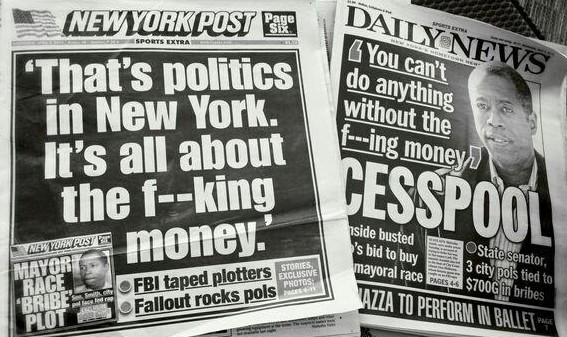Friday, 05 Dec 2014 By George J. Marlin – Newsmax
Despite a national Republican tsunami in 2010, Democrat Andrew Cuomo was elected governor with a whopping 63 percent of the vote.
Armed with that mandate, with the White House in his sights, Cuomo initially governed from the center and began to fix the fiscal mess created by his three immediate predecessors, Govs. George Pataki, Eliot Spitzer, and David Paterson. This approach to governing did not last. By the end of his first term, he managed to infuriate plenty of voters.
On the one hand, his anti-fracking, anti-gun, anti-traditional-marriage stands — not to mention his tax increases — energized opposition among suburban blue-collar conservatives and upstate rural Republicans. On the other, the angst he caused in New York’s bluest quarters forced the extremist Working Families Party to publicly condemn him, to make him beg for their nomination and to agree to expend his treasure and time on electing a Democratic state Senate.
Also, Cuomo’s overall attitude didn’t help. His contempt for retail politics and his micromanaging and bullying alienated most of New York’s political establishment.
Despite these woes, to keep his White House hopes alive — just in case Hillary doesn’t run, or she somehow falters — Cuomo’s main goal this fall was to best the 65 percent his father earned in his 1986 second-term victory.
To achieve that end, Cuomo’s campaign spent millions on negative advertising falsely portraying his Republican opponent, Westchester County Executive Rob Astorino, as a felon. The campaign also limited Cuomo appearances to small, totally controlled, invitation-only events, and discarded those promises made to the Working Families Party.
This approach backfired. Cuomo was re-elected with only 53 percent of the vote, receiving 1 million fewer votes than he did in 2010. It was the lowest count for a Democratic victor since Franklin Roosevelt in 1930, when the state had 12 million people. It has 19 million today.
Upstate, Cuomo carried 13 counties, down from 37 in 2010. On Long Island, his margin in Nassau County was down 8 percentage points, for a total of 52.5 percent. As for Suffolk County, 4 years ago he garnered 58 percent, this time 47.5 percent.
Most interestingly, Democratic state Comptroller Tom DiNapoli — whom Cuomo tried to knock off the party ticket in 2010 — humiliated the governor by leading the statewide ticket with 2.104 million votes. DiNapoli was re-elected with 60 percent of the vote and topped Cuomo’s total by 180,000.
Cuomo’s strategy depressed the Democratic turnout and helped Republicans pick up three Congressional seats — 25 percent of their national gains — and secure outright control of the state Senate. And Astorino, who ran a respectable campaign on a shoestring budget of $4.8 million, received 41 percent, the highest GOP total for governor in 12 years.
After analyzing the results, The New York Times rightly proclaimed on Nov. 5, “Cuomo wins a second term, but his aura of invincibility is gone.”
The next four years will not be happy ones for our governor. Vengeful Democrats, led by New York City Mayor Bill de Blasio and labor union bosses, will be plotting comebacks, counting the days until the Cuomo era ends. Republicans will strive to build on their gains and will block Cuomo’s leftist agenda at every turn.
There are two things you can bank on. First, there will be no third term for Cuomo, who is smart enough to know that in his weakened position, he’ll face a serious primary challenger in 2018. He also knows, from his father’s experiences, that third terms are not fun.
Second, Cuomo will devote most of his time to settling scores. He’s a man who never forgets or forgives a slight. He mastered the role of hatchet man during daddy Mario’s 12 years in office, and doesn’t fear utilizing those skills.
Expect plenty of gubernatorial theater in the next four years, but few accomplishments. Cuomo’s second term will resemble many gubernatorial third terms – marking time, and lackluster at best.
George J. Marlin, a former executive director of the Port Authority of N.Y. and N.J., is the author of “The American Catholic Voter: Two Hundred Years of Political Impact.” He also is a columnist for TheCatholicThing.org and the Long Island Business News.
